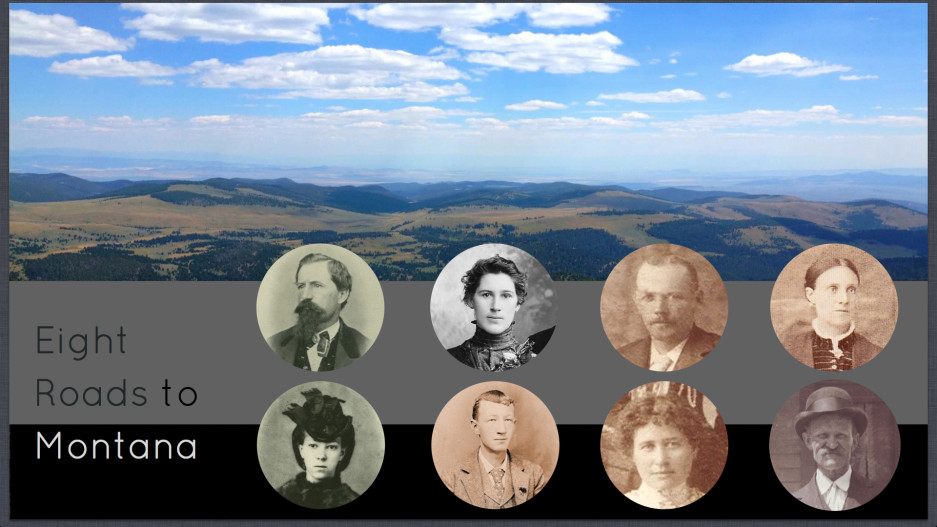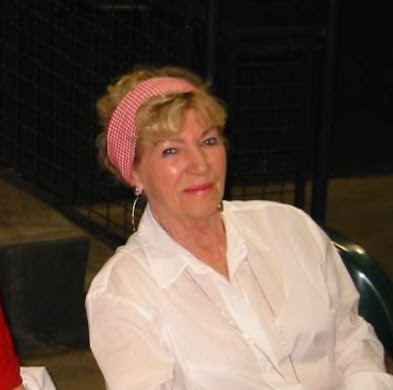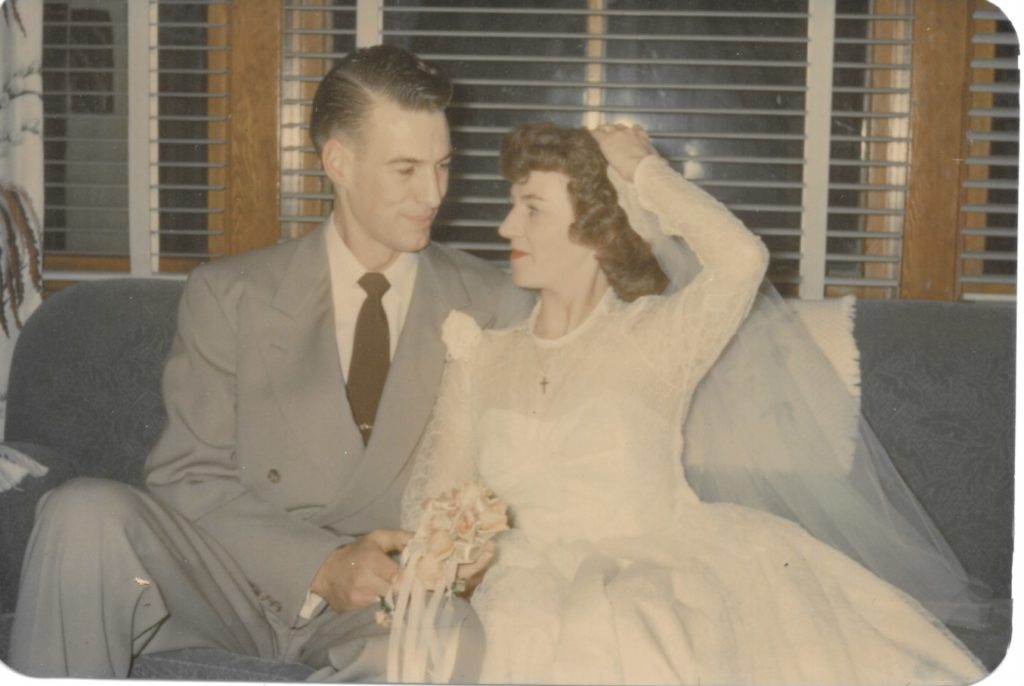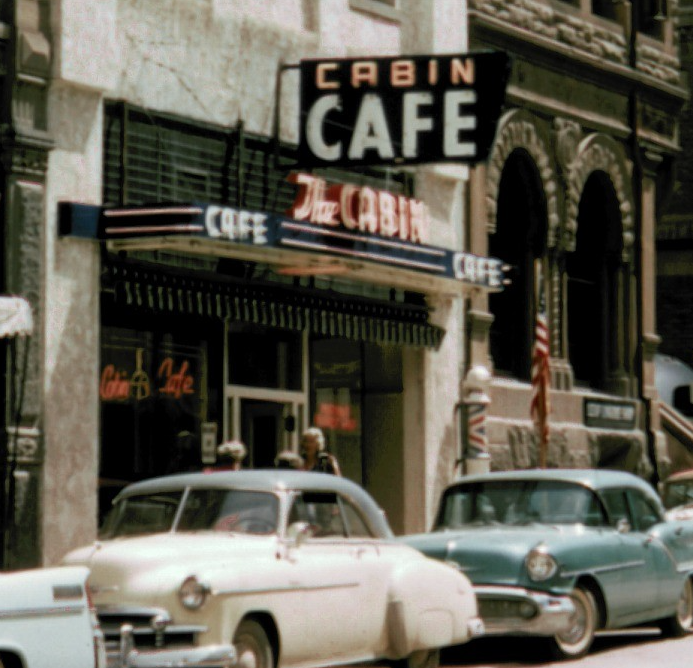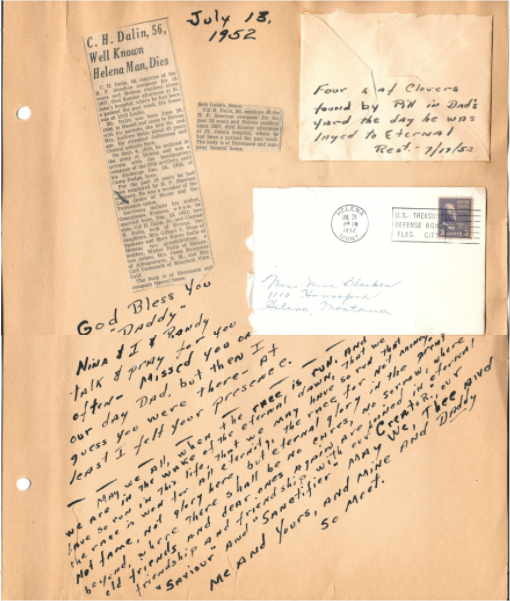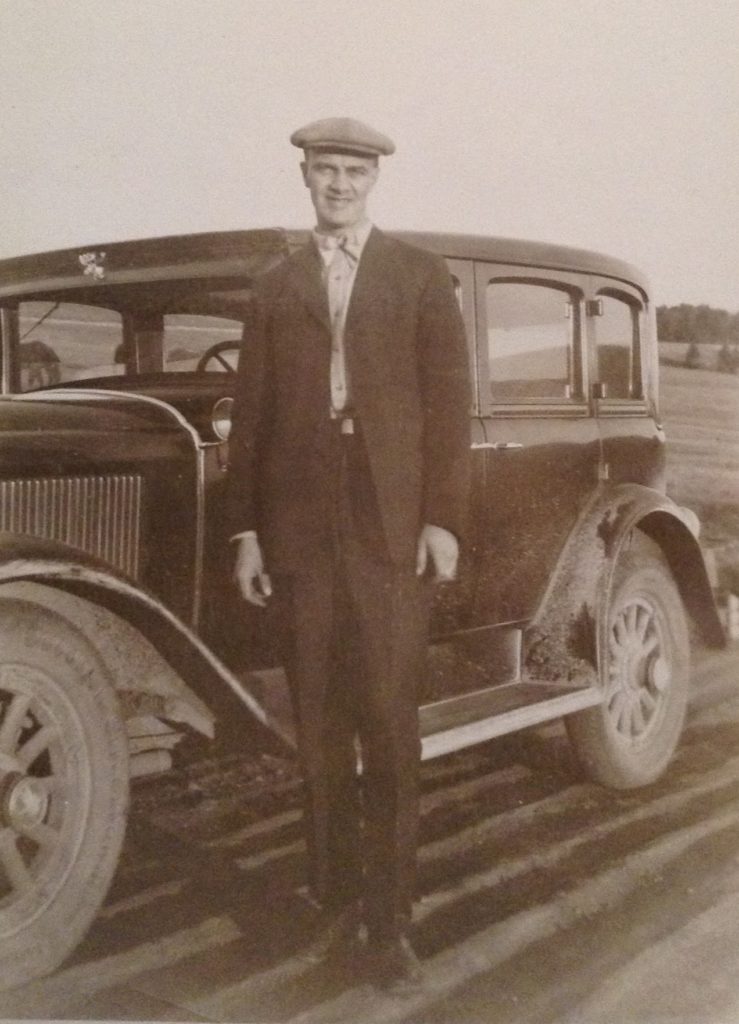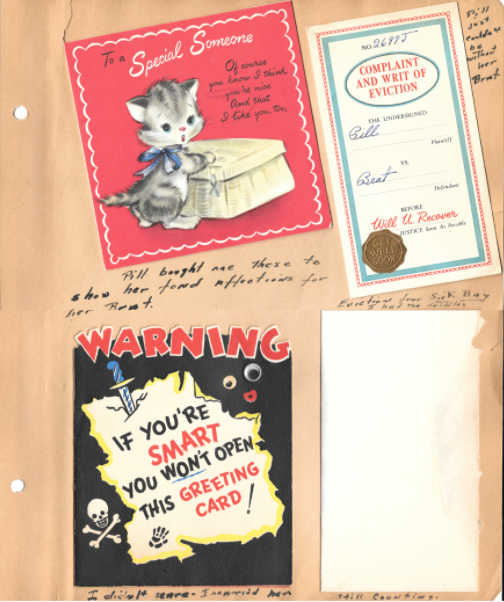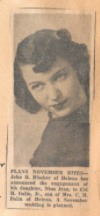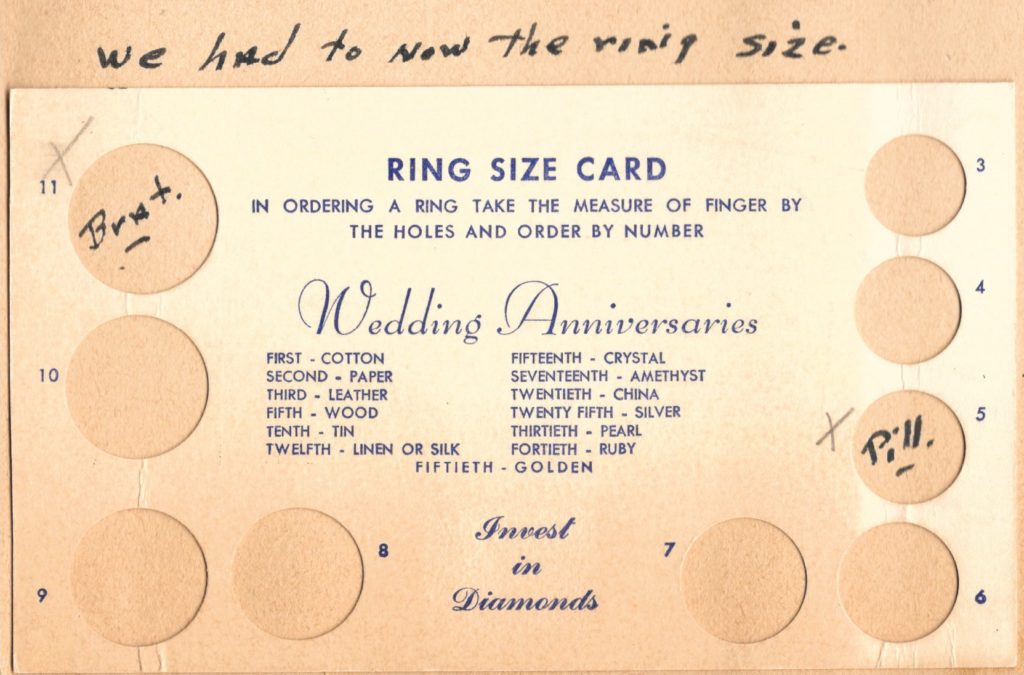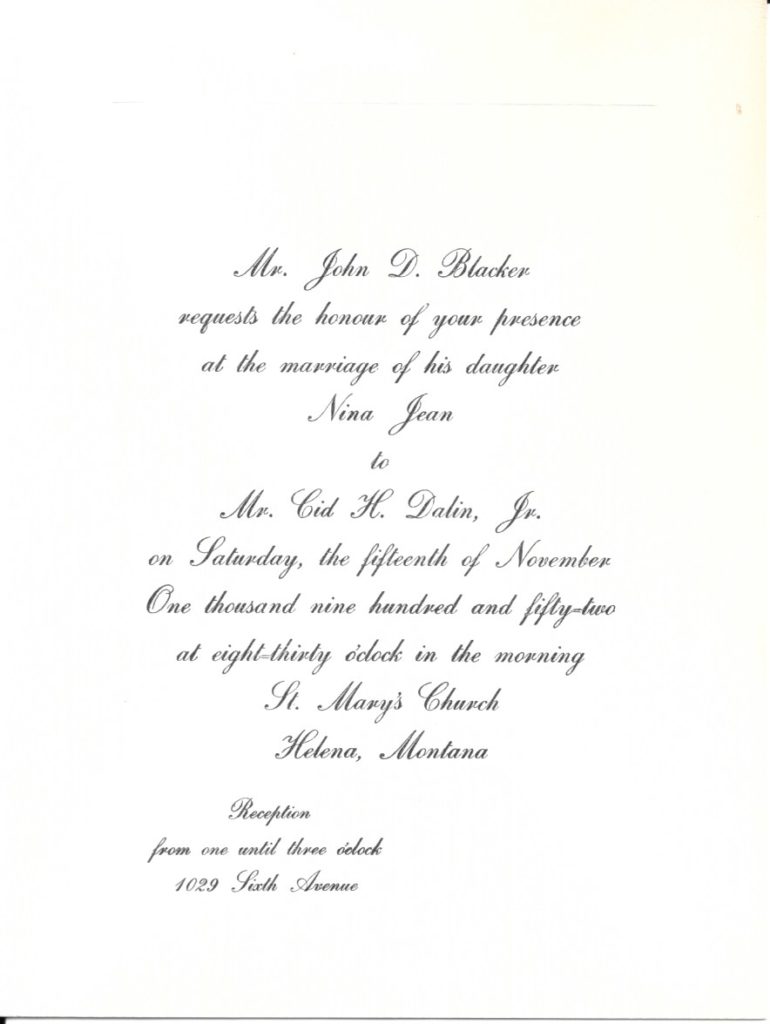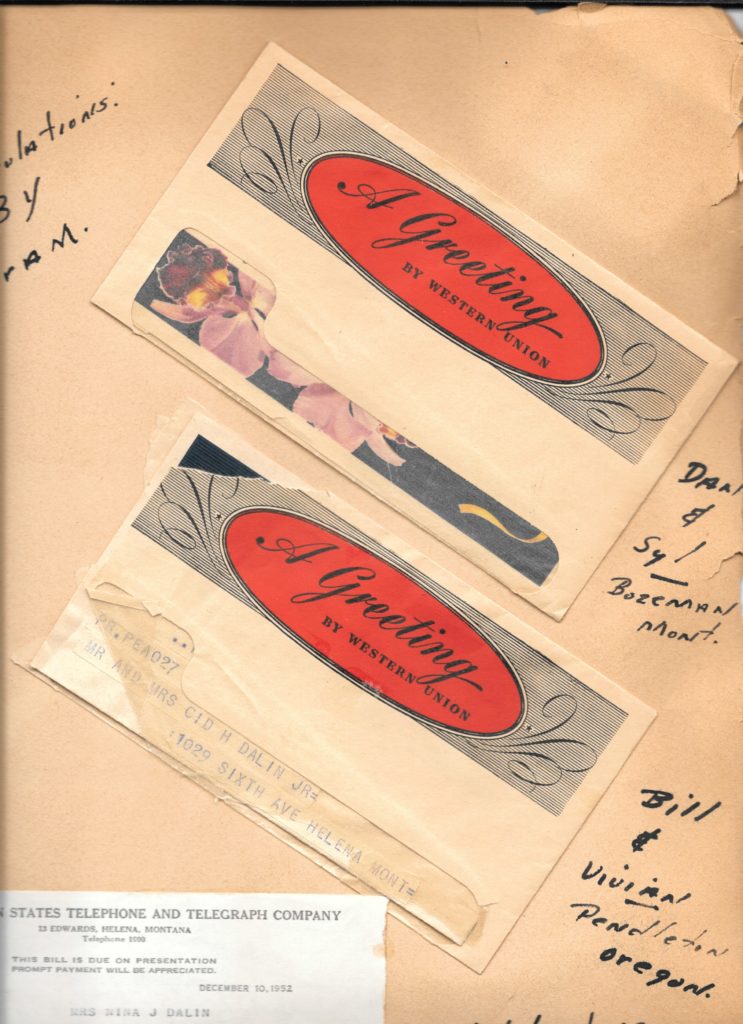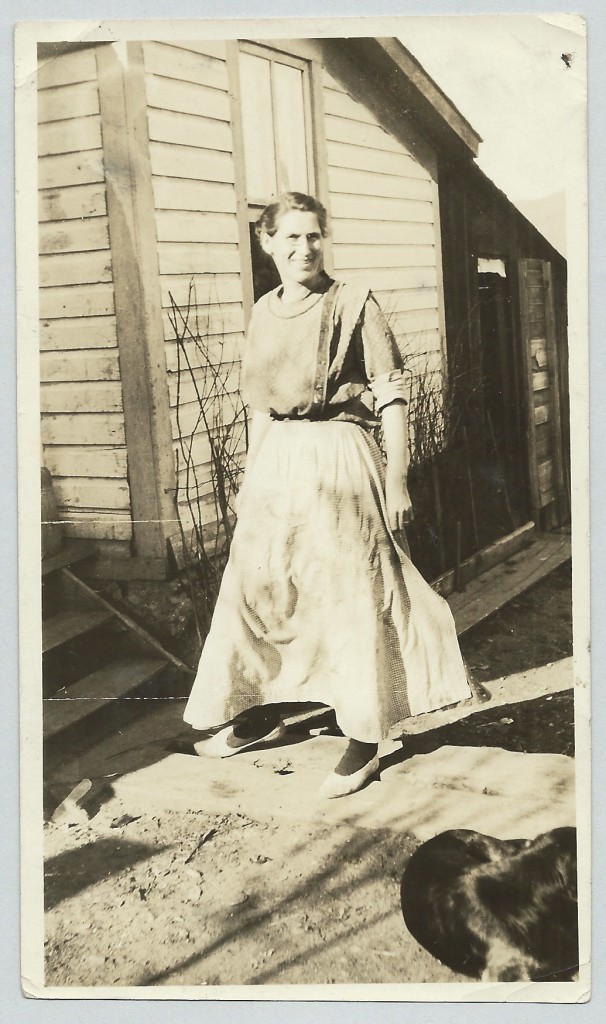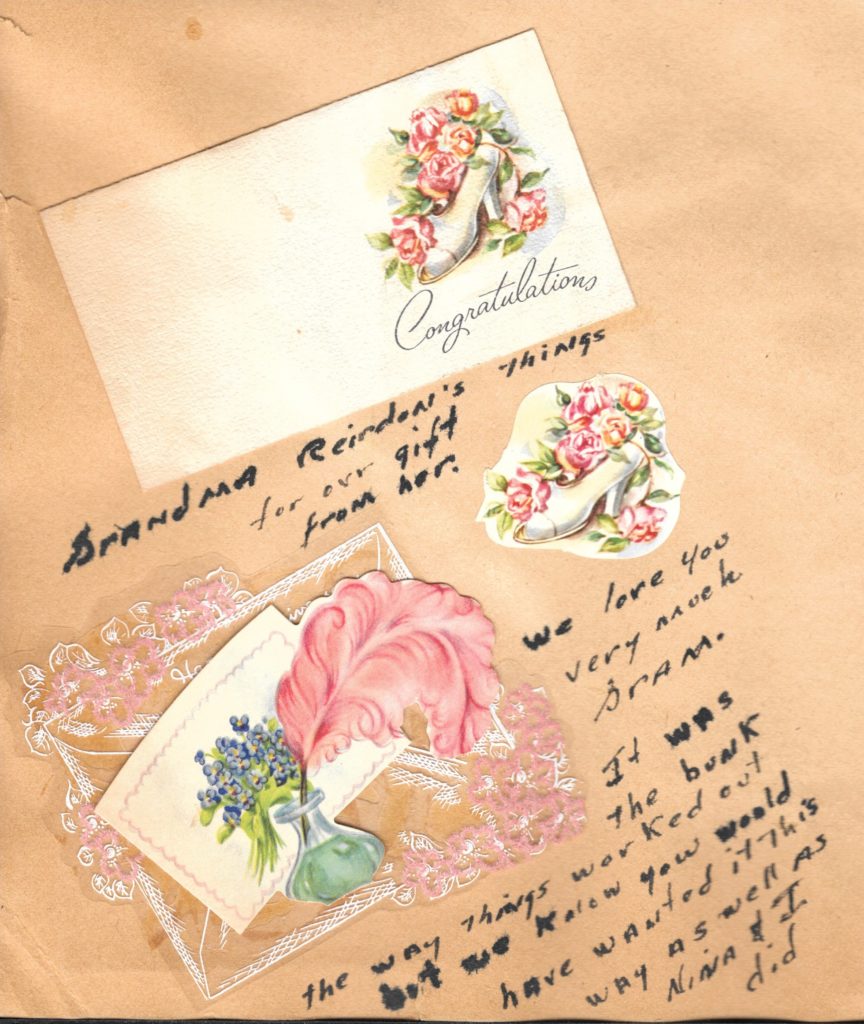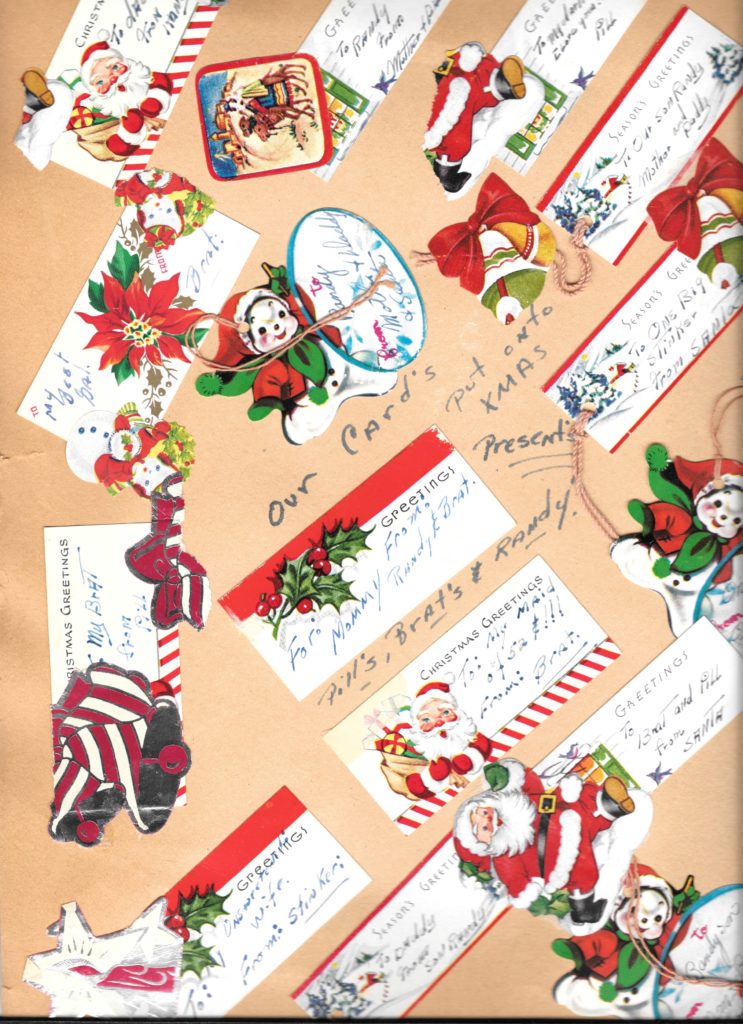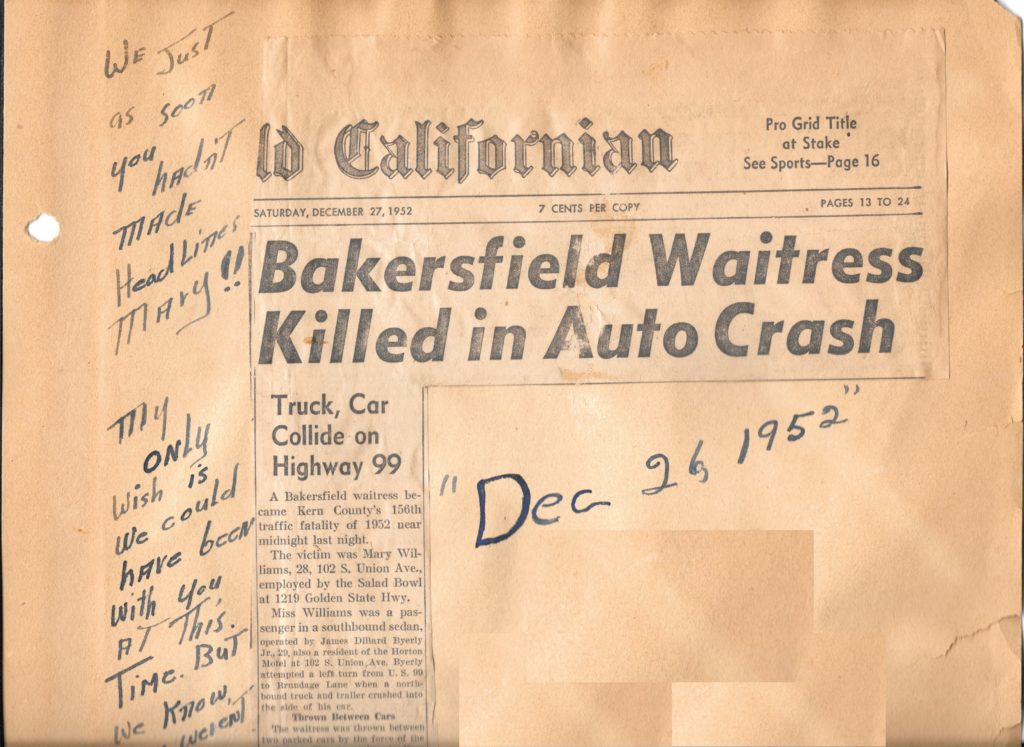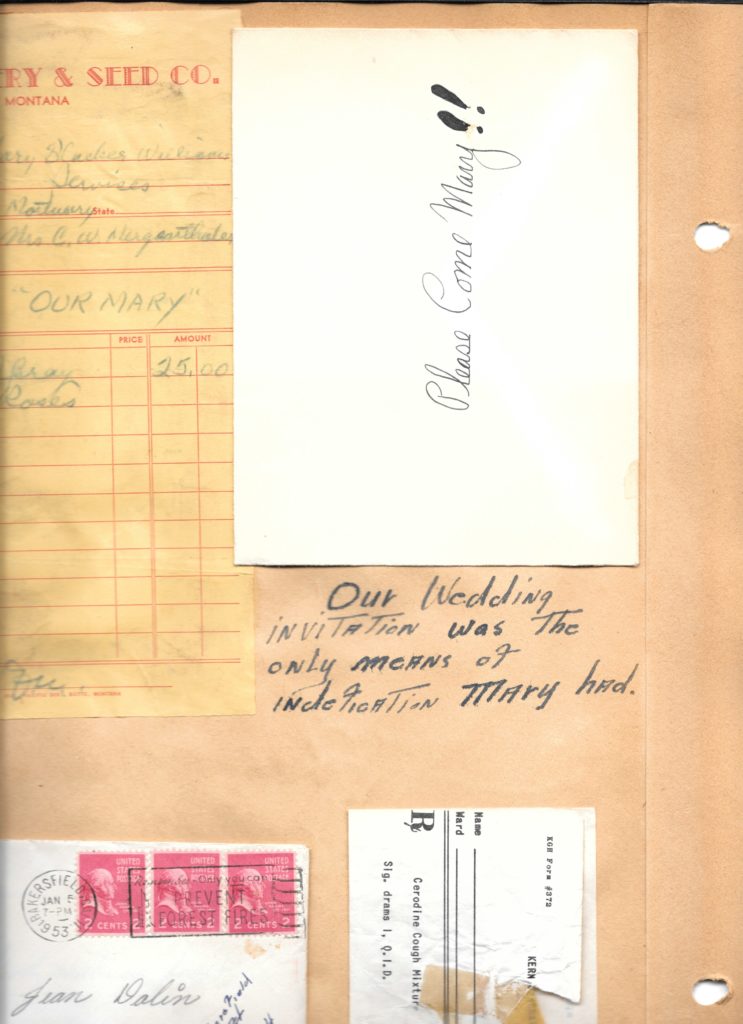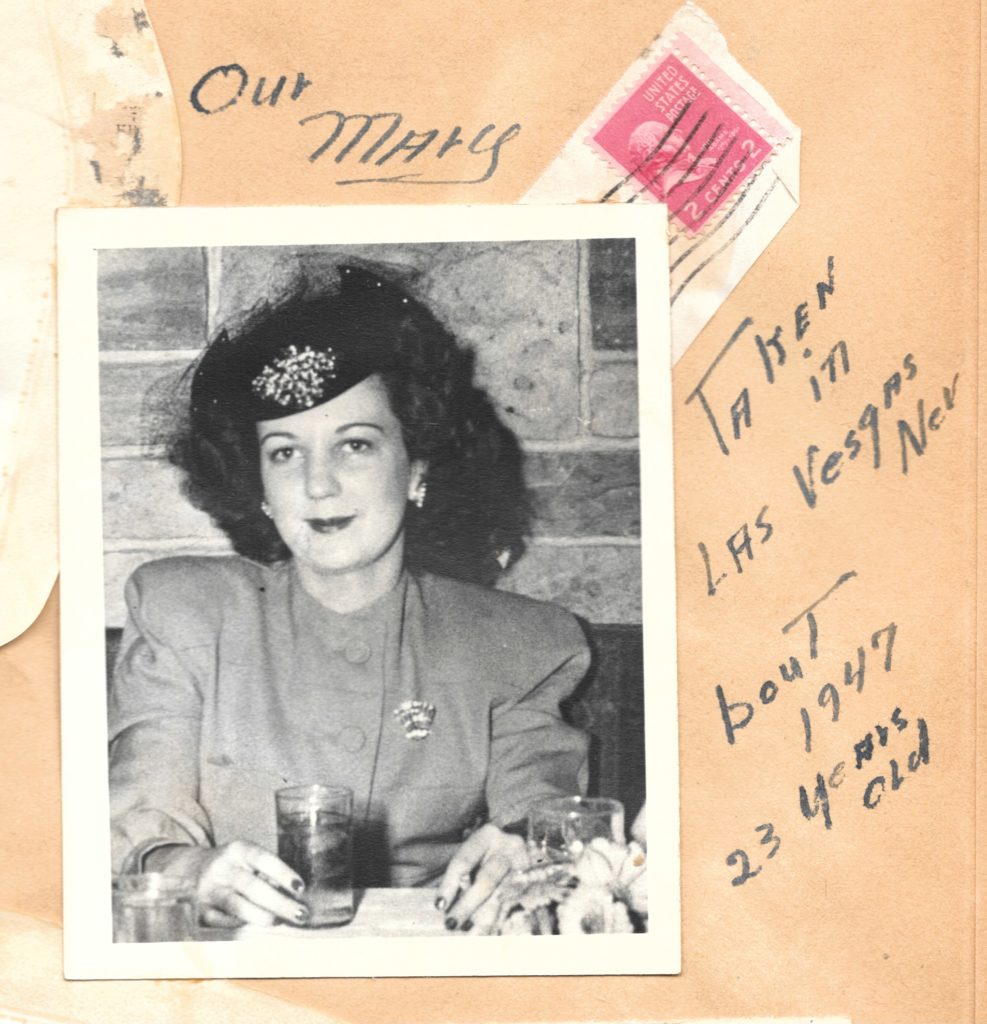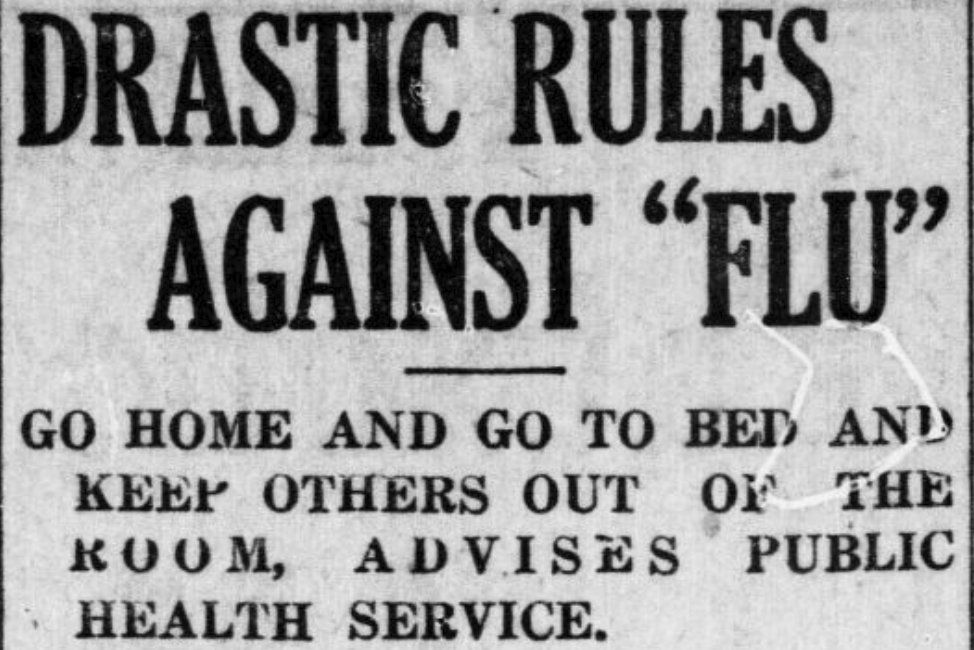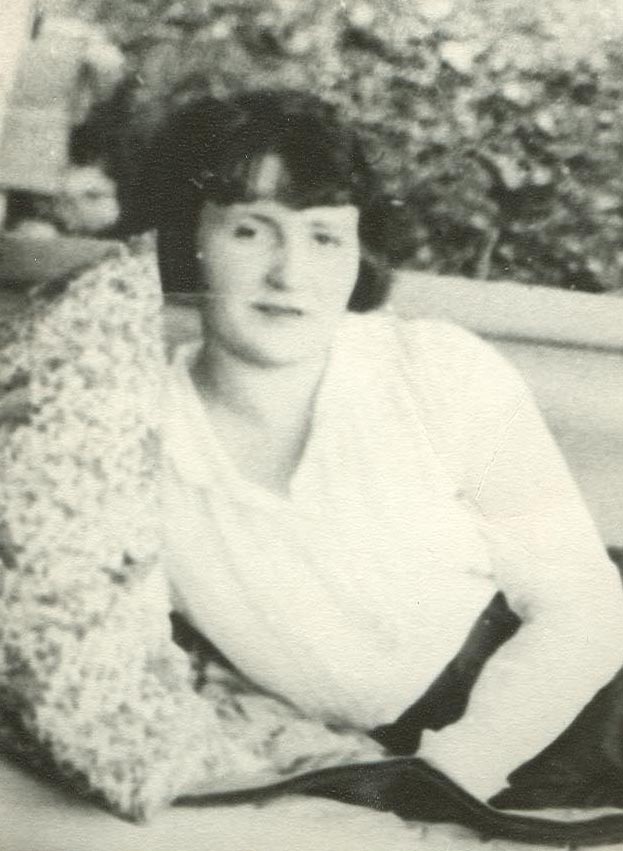
This is my maternal grandmother, Nora Marie (Kieron) Blacker. She was born 7 September 1900 in Butte, Montana. First generation Irish, her parents, Joseph Kieron and Kate Myers, both having been born in Ireland.
The first two namesakes
Two of her granddaughters were named after her. One carries her first and middle name, and I am honored to carry her middle name.
A little about my grandmother Nora
In August of 1970, on one of our many summer visits to my Mom’s home town of Helena, Montana, we made a trip over to Butte one afternoon. I remember driving around while Mom tried to remember where her Irish grandparents lived. Not an easy thing to do because her mother died when she was only 8 years old, and they didn’t visit Butte very often after that.
Nora’s Certificate of Baptism
One stop we made that day was St. Patrick’s Church on Washington Street. Mom wanted to see if we could get a copy of her mother’s baptismal certificate.
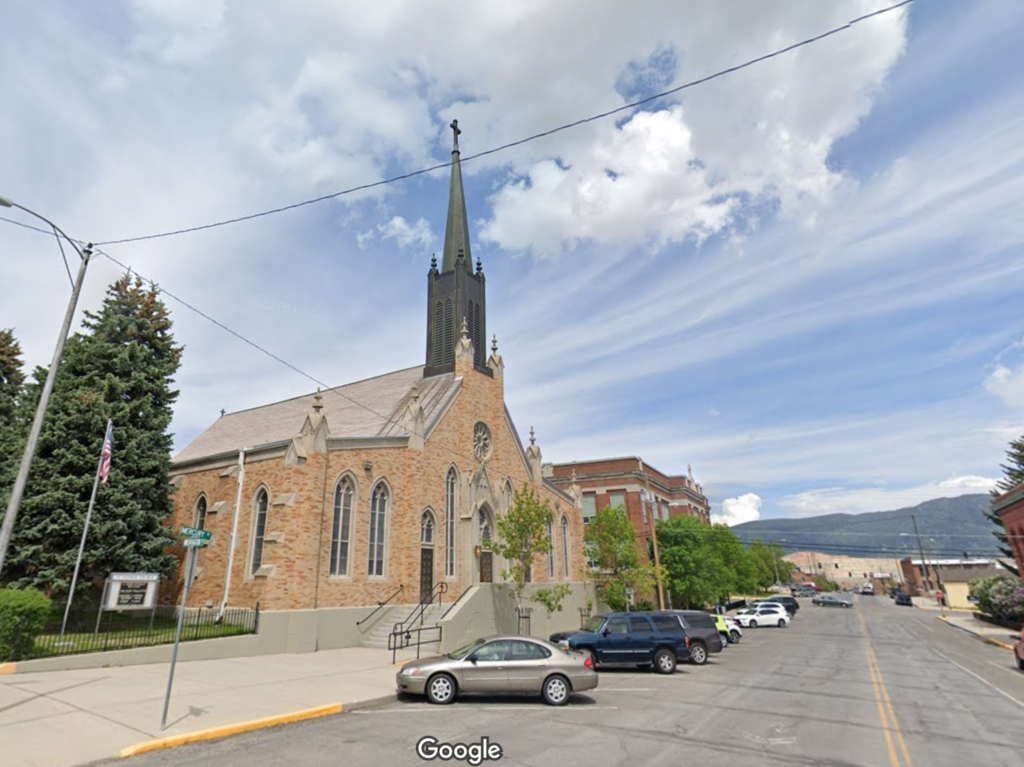
The Certificate of Baptism we obtained that day turned out to be one of the first records we obtained after we began actively researching our family, way back in 1970.
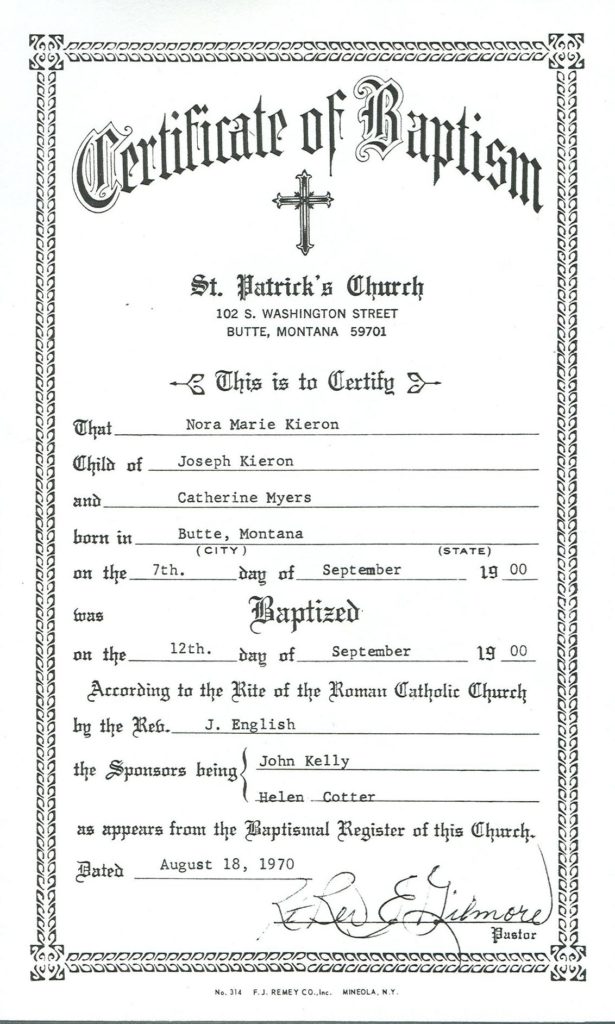
At the time, the only new piece of information we gained from this record was the birth year of 1900. We had always believed Nora was born in 1902.
But as I reviewed this record again while preparing this post, I noticed two more bits of information that we didn’t pay much attention to in 1970.
Who is Helen Cotter?
First, one of the sponsors, Helen Cotter, seemed a very familiar name to me. It took me a few minutes to realize I had seen the Cotter surname before . . . maybe Nora’s parent’s wedding certificate?

Sure enough. There she was . . . “Mrs. J. J. Cotter” listed as a witness. The woman who was a witness to their marriage was also listed as a sponsor for their daughter. Interesting. So, of course, I spent a good deal of yesterday researching her.
I was hoping to learn that Mrs. Cotter was perhaps a cousin to either Joseph or Kate. And while it appears that she is of Irish descent, she was born in New York and at this time I don’t think their paths crossed until they all ended up in Butte.
But I did learn one interesting thing about her.
In 1900, Mrs. Cotter lived with her husband at 507 Colorado in Butte. Again, I recognized that address. After a little poking around, I located the May 1900 ship record of Kate’s brother Thomas, as well as the May 1901 ship record of her brothers Michael and Patrick. And the 507 Colorado address is referenced in all three ship records.
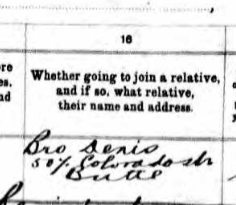
And I noticed another bit of information on the baptism certificate. Nora was baptized five days after she was born, which is a bit unusual because most Catholic babies are baptized several weeks after they are born.
We knew Nora was born a twin. And we knew her brother Peter died several days after they were born.
Nora’s Church record
Many years later, we obtained a copy of the actual Church record, which states Peter died on September 11th, four days after the twins were born.
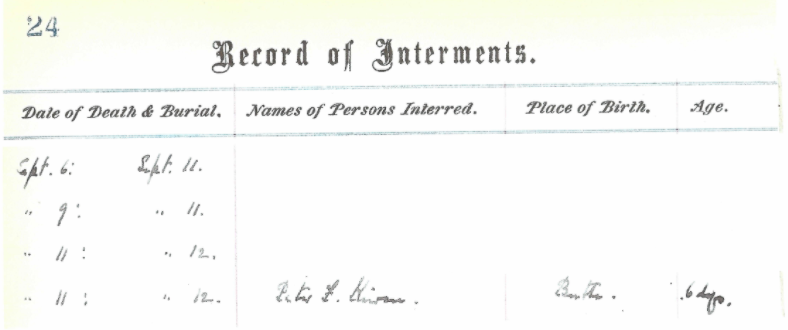
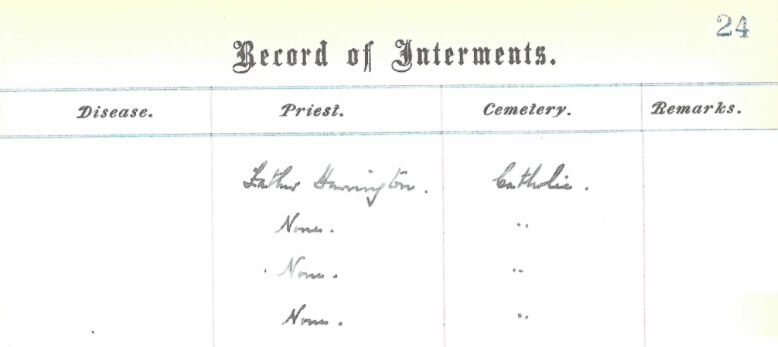
The record below is the entry for my grandmother Nora. The record, written in latin, indicates Nora was also very ill. She received an emergency baptism on September 12th, one day after Peter died and the same day he was buried. Also, note Helen Cotter named as the godmother in the bottom left-hand corner.
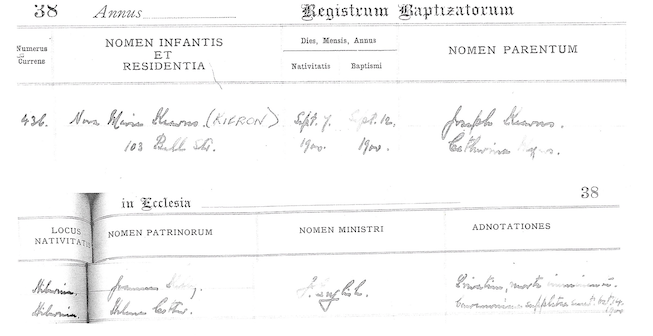
Another namesake?
According to Irish naming tradition, Joseph’s first born son was named after his own father Peter.
That story will have to wait for another day.
The record that knocked a hole in our Irish brick wall
In the summer of 2011, my Mom decided we should pay a visit to the diocese office in Helena to see if there might be a record of the marriage of Nora’s parents, Joseph Kieron and Catherine Myers.
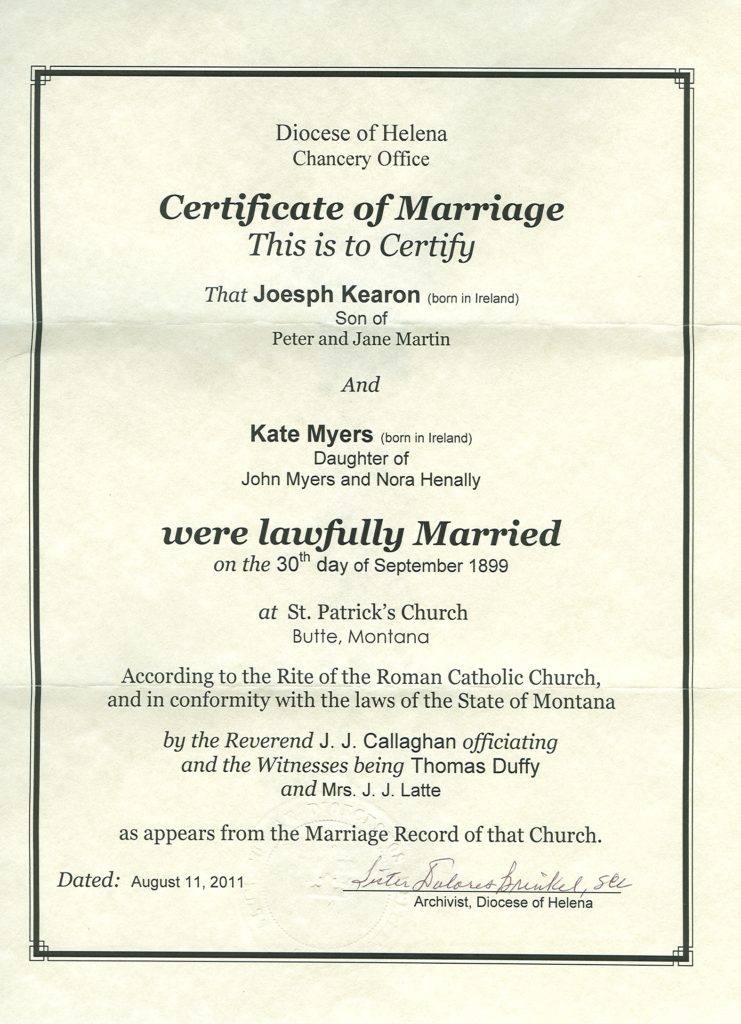
This record turned out to be the one that knocked a hole in our very large Irish brick wall. And that’s because it gave us the names of Kate’s parents, John Myers and Nora Henally [sic]. That was a bit of information we’d never had before. In addition, it also confirmed the names of Joseph’s parents, Peter Kearon [sic] and Jane Martin.
Subsequent civil documents revealed that Joseph was born in Drumgoosatt Townland, County Monaghan, Ireland, and Kate was born in Ower Townland, County Galway, Ireland.
Armed with the names and specific locations of our Irish ancestors, that Irish brick wall finally came tumbling down.
A little about Nora Hennelly
If you have an Irish line in your family, you know how difficult Irish research can be. But I’ve learned a little about her.
She was born in about 1833, either in County Galway or County Mayo. She married John Myers of Ower Townland, County Galway, in about 1858 or 1859. The couple had nine children between about 1860 and 1879.
Nora’s oldest daughter Julia stayed in Ireland, as did her oldest son John who inherited the family’s small farm. The remaining seven children, two daughters and five sons, all were forced to leave in order to have some chance for a better life elsewhere.
Both daughters ended up in America. My great grandmother Kate in Butte, Montana, and her sister Delia in Helena.
One of the five sons ended up in England and the other four joined their sisters in Montana.
A big family mystery
What happened to four of Nora’s sons?
Possibly the biggest mystery in our family involves Nora’s sons, Denis, Thomas, Michael and Patrick.
As stated above, all four immigrated to America in 1900 and 1901, and immediately made their way to Butte, Montana where they found work in the copper mines.
Shortly after the deaths of their sisters Kate in 1902 and Delia in 1903, the brothers slowly disappeared in the records.
I have spent many hours trying to track them down but to no avail. And I keep hoping some of their descendants will show up in our DNA matches . . . but nothing so far.
I’ll keep looking.
As for now . . .
Full circle
My blog post has come full circle . . .

Because as it turns out, the Certificate of Marriage we obtained in 2011 revealed that my grandmother Nora was likely named for her maternal grandmother Nora (Hennelly) Myers.
Since her mother died when she was only two years old, she may not have been aware of that. I hope I’m wrong.
One more woman named Nora
Armed with all that great information I mentioned above, and many hours of research, we’ve made several contacts with cousins we never knew we had.
We made one particularly significant discovery early on when we found out my grandmother Nora had two maternal first cousins who immigrated to America from County Galway.
And the best part? We’ve since connected with many of their descendants, one of whom gave me a lovely picture of one of those cousins . . . and her name is also Nora.
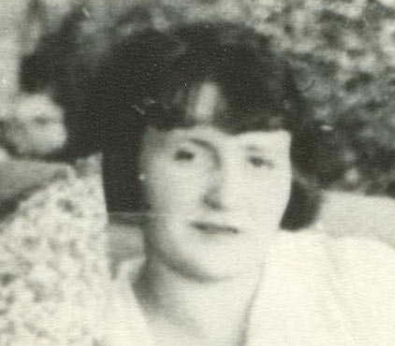
My grandmother Nora . . . 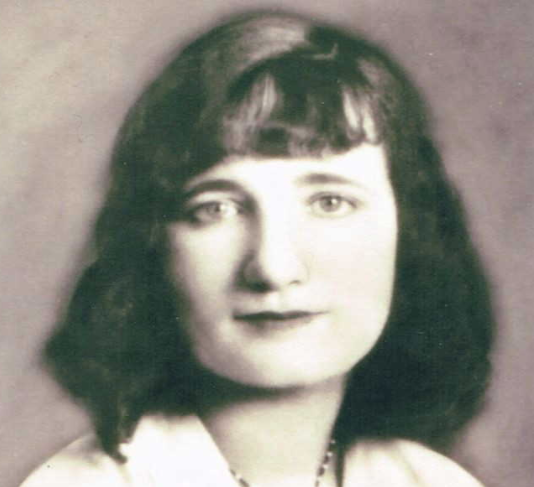
and her first cousin Nora
Is it just me? Or do you also think these two cousins look like they could be sisters?
I can’t help but wonder what their grandmother Nora looked like.
